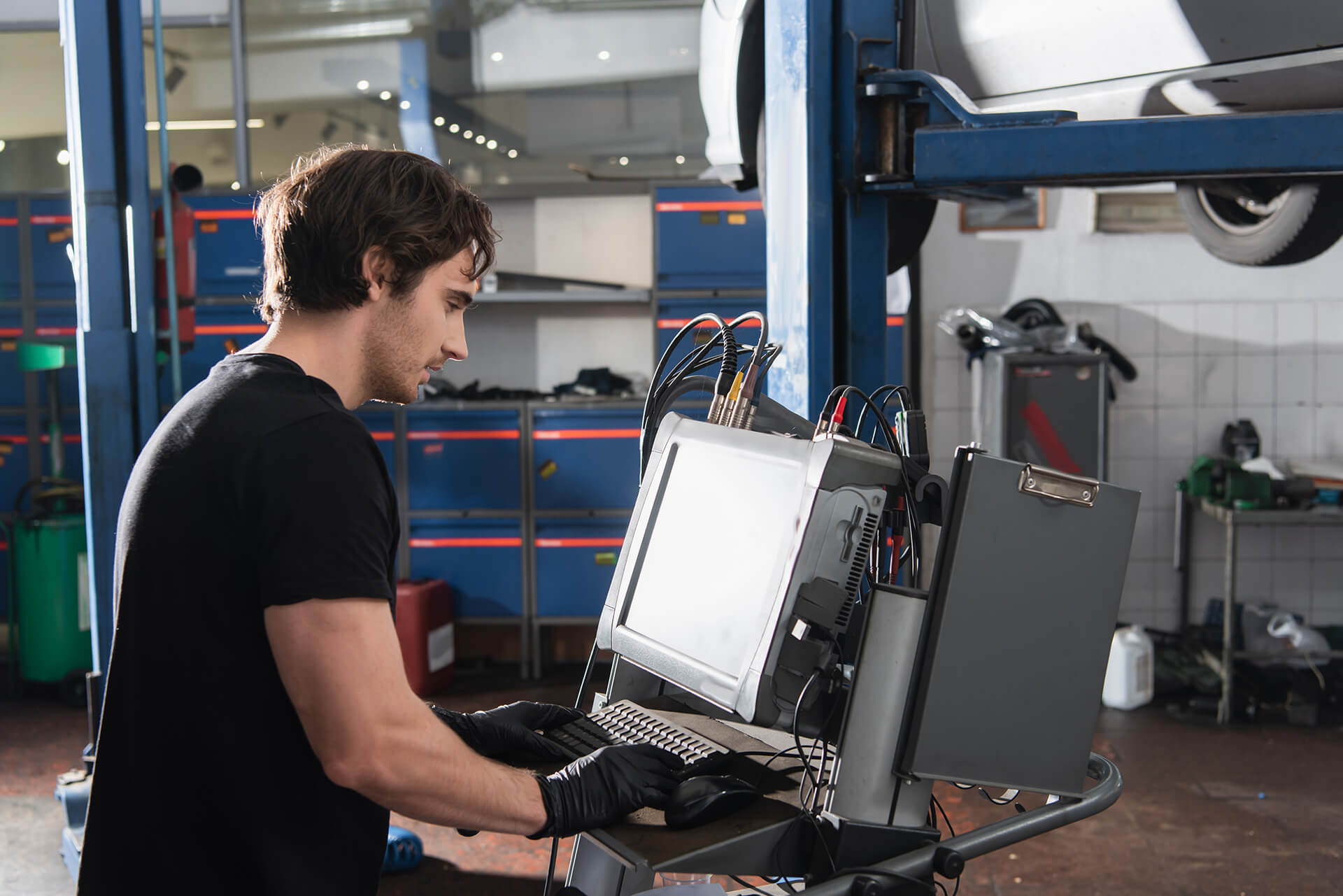
side-view-of-mechanic-in-gloves-using-computer-in-2023-11-27-05-12-22-utc--1-.jpg
Posted on Friday, March 1, 2024
By:
david graber
Categories:
Kia
|
Buick
|
pontiac
|
chevrolet
|
ford
|
chrysler
|
dodge
|
honda
|
subaru
|
toyota
|
mazda
The automobile industry has undergone a remarkable transformation over the last century, driven by relentless innovation and technological advancement. This journey has not only redefined the way we view and use cars but has also led to
significant improvements in vehicle design, performance, and safety. Let's take a closer look at how car technology has evolved over the years and the impact it has had on the driving experience.
The Early Years: Invention and Initial Development
The history of car technology begins in the late 19th century when the first gasoline-powered automobile was introduced. These early vehicles were simple by today's standards, with basic engines, manual transmissions, and minimal safety
features. The focus was primarily on making cars that could move, with little consideration for comfort, efficiency, or safety.
The Rise of Mass Production: Accessibility and Standardization
The introduction of mass production techniques by Henry Ford in the early 20th century revolutionized the automobile industry. The Model T, introduced in 1908, became the first car to be mass-produced using assembly line methods,
drastically reducing its price and making it accessible to a wider audience. This period saw the standardization of car components and layouts, setting the stage for future innovations.
The Post-War Boom: Advances in Design and Performance
The post-World War II era marked a significant period of growth and innovation in the automobile industry. Cars became more than just a means of transportation; they were a symbol of freedom and status. This period saw the introduction of
automatic transmissions, power steering, and improved engine designs, which significantly enhanced vehicle performance and driving comfort.
The Safety Revolution: From Seatbelts to Airbags
Safety became a major focus in the 1960s and 1970s, leading to the introduction of seat belts, crumple zones, and safety regulations. The 1980s and 1990s saw the widespread adoption of airbags and anti-lock braking systems (ABS), further
improving vehicle safety. Today, advanced driver-assistance systems (ADAS) such as automatic emergency braking, lane-keeping assist, and adaptive cruise control are becoming standard features, significantly reducing the risk of accidents.
The Digital Age: Connectivity and Electrification
The 21st century has ushered in the digital age of automobiles. Cars are now equipped with sophisticated infotainment systems, GPS navigation, and connectivity features that allow for seamless integration with smartphones and other devices. The push for sustainability has also led to the development of electric vehicles (EVs), which promise to revolutionize the industry with their zero-emission capabilities and innovative designs.
The Future: Autonomous Driving and Beyond
The next frontier in car technology is autonomous or self-driving cars. With advancements in artificial intelligence, machine learning, and sensor technology, several automakers and tech companies are in the race to develop fully autonomous vehicles. While there are still challenges to overcome, the potential for self-driving cars to improve safety, reduce traffic congestion, and transform mobility is immense.
Conclusion
The evolution of car technology reflects the industry's commitment to innovation, safety, and sustainability. From the early days of the Model T to the dawn of autonomous vehicles, each advancement has significantly impacted how we experience and interact with cars. As we look to the future, it's clear that technology will continue to drive the evolution of the automobile, promising an exciting era of new possibilities and challenges. In embracing these changes, we open the door to a safer, more efficient, and more connected world.
Tagged:boyertown, gilbertsville, oley, douglassville, amity, pottstown, bally, barto, bechtelsville, car repairs, auto repair, car repair, auto repairs, West Chester, Limerick, Malvern, vehicle maintenance